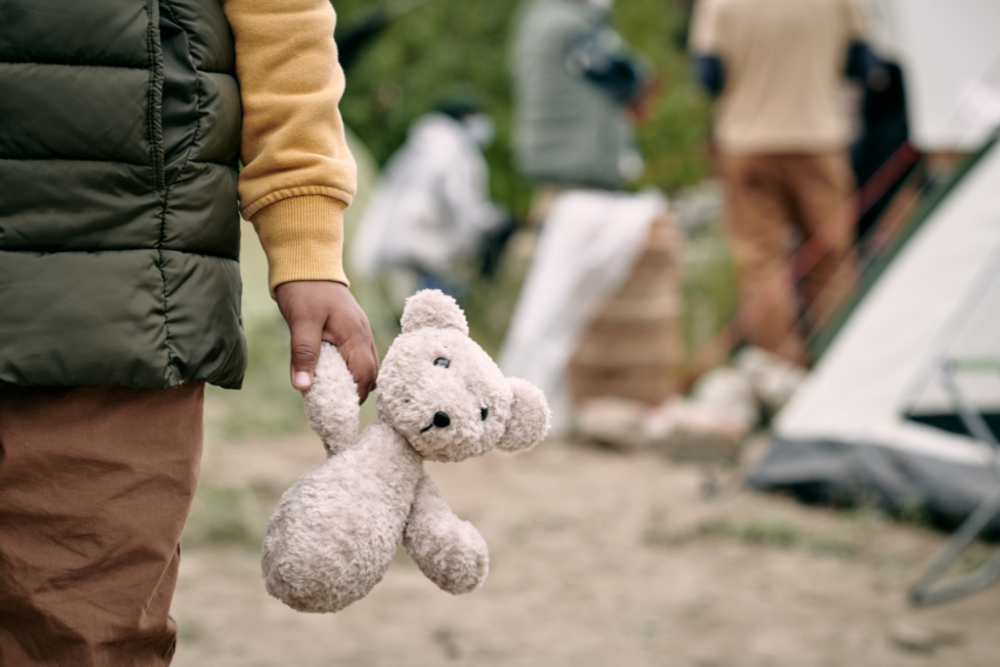
The forcibly displaced population refers to individuals who have had to leave their home country due to natural disasters, human rights violations, wars, etc., and relocate to other regions or countries. This article aims to explore the status and causes of the global forcibly displaced population and seek solutions.
“Almost 90% of the population of Gaza, 1.9 million people, have been displaced and many have been forced to move multiple times.
People are standing in line for hours for a small amount of water, which may not be clean, or bread, which alone is not sufficiently nutritious.”
- Tedros Adhanom Ghebreyesus, Director-General of the World Health Organization (WHO) -
The majority of the population in the Gaza Strip became refugees following the outbreak of the Israel-Hamas war in October 2023.
The only escape route from the Gaza Strip is through Rafah, Egypt. Currently, in Rafah, most refugees from the Gaza Strip are living in makeshift structures, tents, or are homeless. This dire site, often called a “cauldron of despair,” has seen a massive influx of the majority of the Gaza Strip's population, forming refugee camps.
Rafah, Egypt, presents to us the current state of the global forcibly displaced population issue.
―
Q. What is a forcibly displaced population?
―
A. The forcibly displaced population encompasses individuals who have been compelled to leave their home country due to natural disasters, human rights violations, wars, internal conflicts, and social instability, among other reasons. These are people who had to migrate due to external forces.
Agencies like the International Organization for Migration (IOM), a UN body, categorize the forcibly displaced population into the following types:
▪ Refugees
Refugees are individuals who have received international recognition and have migrated to another country based on international cooperation. They require international protection and assistance and migrate due to facing severe human rights abuses or violence in their home country based on race, religion, nationality, political opinions, etc.
▪ Internally Displaced Persons (IDPs)
IDPs have moved to safer areas within their own country and often do not receive international protection or assistance.
▪ Newly Displaced Persons
These are individuals who have had to urgently migrate due to sudden wars, internal conflicts, or natural disasters, often relocating within their own country.
▪ Non-Returnable Migrants
Non-returnable migrants are those who cannot return to their country of origin. Often, it's legally impossible or their safety cannot be guaranteed, necessitating long-term protection and solutions.
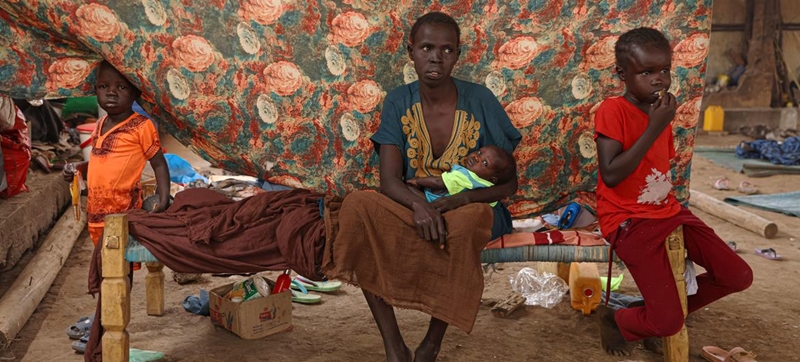
Photo credit: UN News
According to the UN Refugee Agency (UNHCR), the civil war that broke out in Sudan in April 2023 has led to over 100,000 people relocating to neighboring Ethiopia.
―
Q. What is the current state of the forcibly displaced population?
―
A. According to the UN Refugee Agency (UNHCR) and its ‘Global Trends 2022’ report, by the end of 2022, approximately 108.4 million people worldwide were forcibly displaced from their homes.
Refugees account for about 35.3 million,
Internally Displaced Persons (IDP) for about 62.5 million,
Asylum seekers who have applied for asylum number around 5.4 million, and
People in need of international protection are about 5.2 million.
From the graph below, it's evident that the population of forcibly displaced individuals has significantly increased since around 2010.
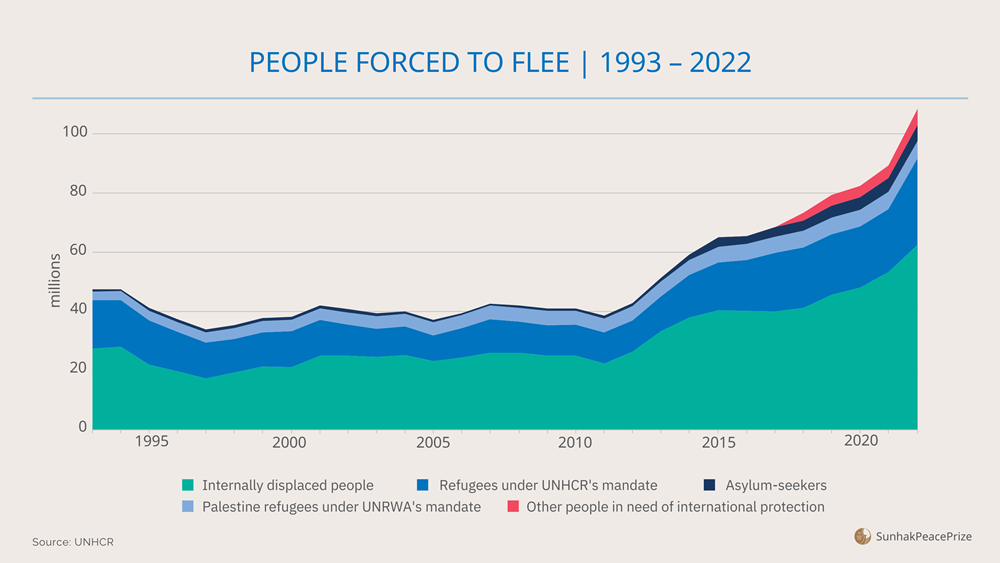
While children constitute 30% of the global population (grey), they represent 40% of those forcibly displaced (color).
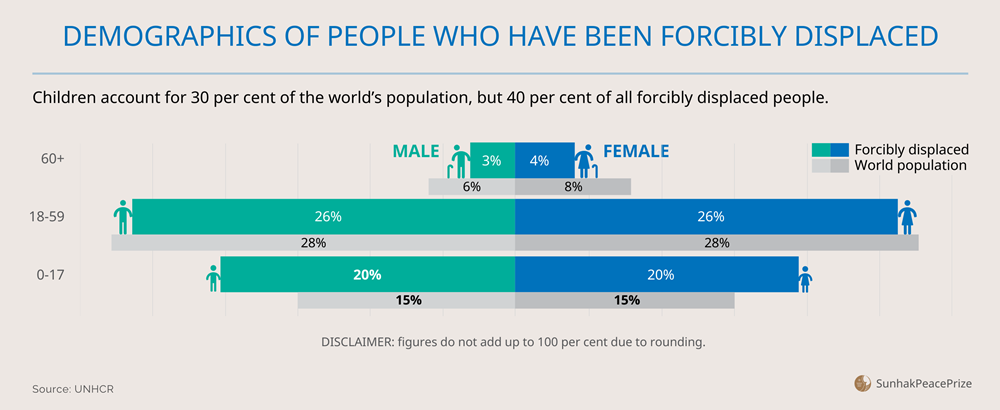
The report highlights that Turkey hosts the largest number of refugees globally, with about 3.6 million, followed by Iran with 3.4 million, Colombia with 2.5 million, Germany with 2.1 million, and Pakistan with 1.7 million.
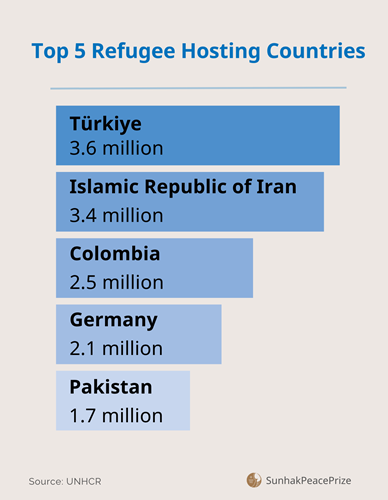
Download the report ↓↓↓ |
―
Q. What are the causes of forced displacement?
―
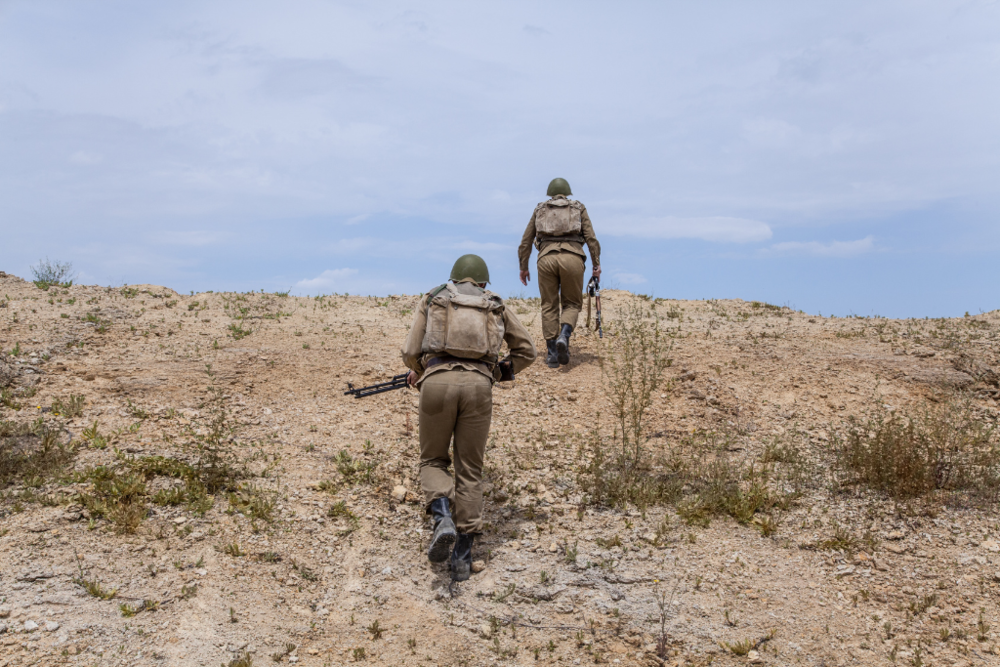
A. The reasons for forced displacement can vary by country, region, and situation, often resulting from a combination of multiple factors. The main causes include:
▪ War and Internal Conflicts
War and internal conflicts are among the most significant causes of forced displacement. Conflicts like the Israel-Hamas war, the Syrian civil war, the Russia-Ukraine war, the internal conflict in Yemen, and the unstable situation in Afghanistan have forced many people to flee. Most of these individuals have sought refuge in neighboring countries to escape bombings.
▪ Human Rights Violations and Political Oppression
In many countries, political reasons lead to oppression or human rights violations. In such circumstances, many people migrate to seek freedom and safety elsewhere. For example, in North Korea, human rights violations and political oppression have driven many to flee to South Korea or other countries.
▪ Natural Disasters and Climate Change
Natural disasters like floods, earthquakes, and storms force many to evacuate to safer areas for survival. Additionally, climate change has led to droughts, food shortages, and resource depletion worldwide, prompting people to leave their homes.
▪ Economic Difficulties and Poverty
In some countries, the lack of job opportunities or economic hardship makes it difficult for many to sustain a living. Seeking better opportunities, they migrate to other places. Especially in developing countries, poverty drives many to choose migration.
▪ Cultural Conflicts and Racial Discrimination
When cultural, religious, or racial conflicts and discrimination occur, some people migrate to find safer or more accepting environments.
These varied causes interact in complex ways, contributing to the increasing global population of forcibly displaced individuals.
―
Q. How can we solve the issue of the forcibly displaced population?
―
A. To address the issue of the forcibly displaced population, we all need to foster a global citizenship with an open heart and collaborate across borders.
▪ Cultivating an Open Global Citizenship
Forced displacement is an unavoidable phenomenon. We must create a social atmosphere that warmly welcomes and includes new neighbors who are forcibly displaced individuals.
As Kant emphasized in his "Perpetual Peace," all humans have the right to be hospitably received anywhere. This means forcibly displaced individuals should be protected to live safely in new environments, ensuring their dignity and equal rights are respected.
▪ Strengthening International Cooperation
The issue of forced displacement cannot be resolved by a single country alone; it is a transnational issue. Therefore, countries must join hands to protect the rights of migrants and work together for their social and economic integration.
International organizations like the UN Refugee Agency (UNHCR) and the International Organization for Migration (IOM) are already supporting migrants and refugees. They lead in developing policies for smooth movement and resettlement of these individuals.
Addressing the forcibly displaced population problem requires comprehensive efforts, including policy reforms, fostering inclusive societies, and enhancing international partnerships to ensure the protection and integration of displaced individuals into new communities.
―
For a Better World
―

Looking back through history, humanity has always been on a quest for a better environment. We are all 'Homo Migrans', humans on the move in search of a better life.
The refugees from the Gaza Strip, along with all forcibly displaced individuals worldwide, can be seen as participants in humanity's collective journey towards a better life as 'Homo Migrans'.
Migration sometimes causes chaos and disorder and challenges the existing order, but wise humanity has always ultimately sought peace, regardless of the circumstances. We should warmly embrace these individuals with the spirit of hospitality Kant spoke of, as we strive for a better world peace.
In this shared journey, each step towards understanding, support, and cooperation not only aids those in immediate need but also contributes to the fabric of a more compassionate and equitable global community. Let us continue to open our hearts and borders, in the spirit of global citizenship, to build a more inclusive and peaceful world for all.
“Forced migrants are not merely statistics or numbers.
They are human beings with rights and dignity equal to our own.
We must listen to their stories and empathize with their suffering.”
- António Guterres, Secretary-General of the United Nations -
Learn more : One Hundred Million Refugees Around the Globe Syrian refugees dream of a safe home |
Written by Sharon Choi
Director of Planning
Sunhak Peace Prize Secretariat

